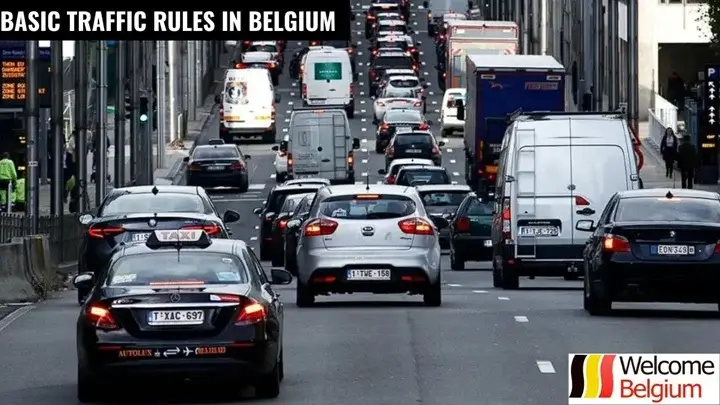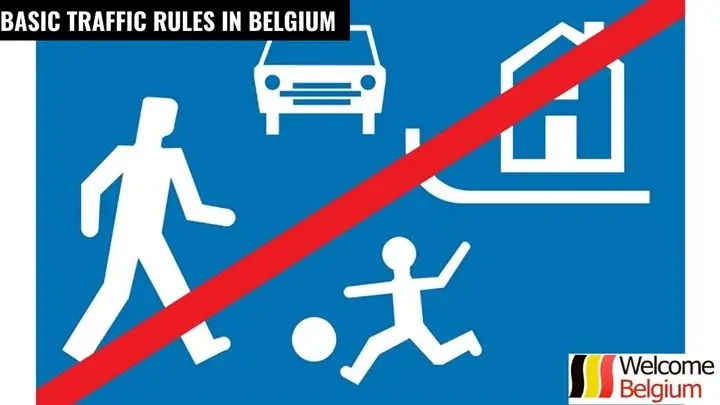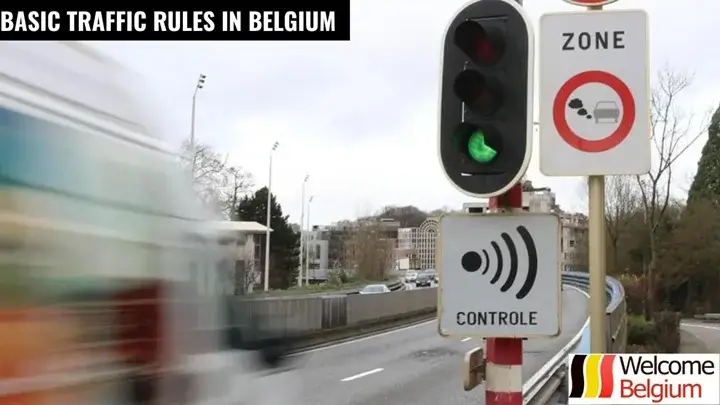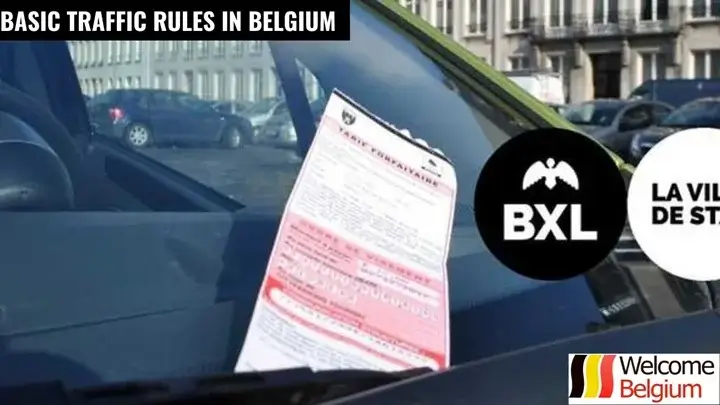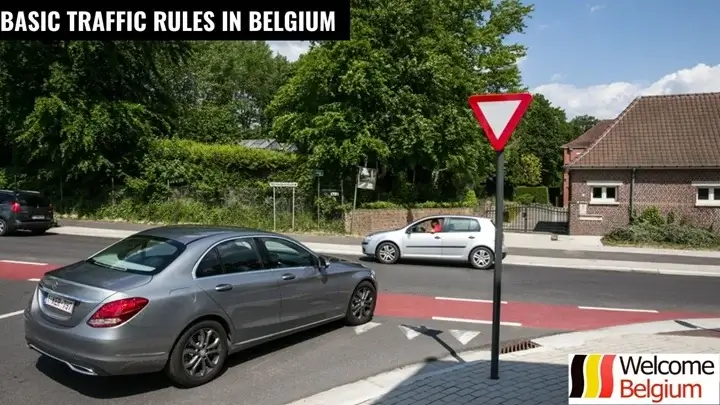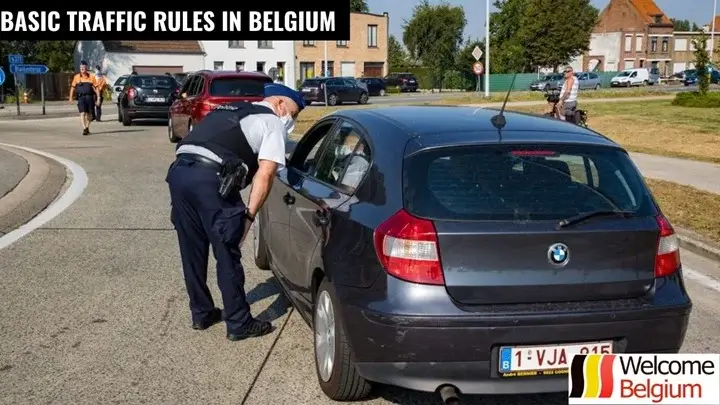If you are planning a trip to Belgium – whether for a holiday, a move or just renting a car – you will need to know the local traffic rules. Belgian roads may seem familiar, but some things can surprise even an experienced driver.
In this article, we will look at how the traffic rules of Belgium differ from other countries, what to pay attention to while driving and how to avoid trouble. This is especially important for tourists and new residents – after all, road safety begins with understanding local laws.
Basic rules
In Belgium, traffic is on the right, as in most European countries. However, even familiar things can have their own nuances here. Understanding the basic rules is not only a matter of following the law, but also a guarantee of your safety and comfort on the road.
The main traffic rules in Belgium in detail:
- The minimum age to drive a car is 18 years.
- Category B driving license is required for passenger cars
- Driving licenses from EU countries are recognized without replacement, in other cases an exchange is required
- In Belgium, right-hand traffic is strictly observed
- Road signs are standardized but have three language versions: French, Dutch and German.
- Right priority applies unless otherwise stated.
- Overtaking is permitted only on the left
- The use of turn signals is mandatory for any maneuver.
- Motorways are free, but speed limits may vary depending on conditions
These rules may seem obvious, but it is often the details that cause fines or conflicts. If you are driving in Belgium, respect local laws and drive calmly.
Interesting fact: in some cities in Belgium you can find priority zones for cyclists, where cars are required to give way even outside of intersections.
Speed limits
Speed limits in Belgium are strictly regulated and often depend on the type of road and conditions. Violations are recorded by cameras and can result in hefty fines. Therefore, it is important to know in advance where and how to slow down.
Detailed speed limits in Belgium:
- Within the city limits – 50 km/h.
- In residential areas and near schools – 30 km/h (zone 30).
- On normal roads outside populated areas – 70 km/h.
- On highways – 90 km/h.
- On motorways – 120 km/h.
- In areas with poor visibility or during rain, limits may be reduced.
- Electronic signs with variable speed limits are often found on motorways.
- For exceeding the speed limit by 10 km/h, a fine of 50 euros is possible, and for serious violations, the loss of a license.
- Hidden speed cameras are common, especially in zones 30.
Whether you are a tourist or a permanent resident, observing the speed limit will help avoid trouble and ensure safety for all road users.
Important: Belgian police can send a speeding ticket directly to your country if you are driving a foreign car – the European database works well.
Fines and penalties
Traffic fines in Belgium are not just a warning. Everything works strictly and according to the rules: electronic cameras, a penalty point system, quick notifications. Even if you are driving a rented car, you will not be able to avoid punishment. It is especially important to know the local rules if you are planning a trip, moving or already living in Belgium.
Detailed features of fines in Belgium:
- For exceeding the speed limit by 10 km/h in the city – from 50 euros.
- Driving through a red light – from 174 euros.
- Not wearing a seat belt – 116 euros.
- A phone call without a headset costs 174 euros.
- Driving under the influence (from 0.5 to 0.8 ppm) – from 179 euros and a possible driving ban.
- If the level is above 0.8 ppm, there will be a court case, a large fine and deprivation of rights.
- Repeated violations increase the punishment.
- There is a system of penalty points in place – if they accumulate, your license may be revoked.
- Foreign drivers also receive fines – they arrive by mail in any EU country.
Knowing the rules and driving carefully will help you save not only money, but also your driving license. In Belgium, violators are taken seriously, and you shouldn’t rely on “maybe”.
Interesting fact: for some violations, such as driving through a red light, you can get not only a fine, but also an invitation to court – regardless of citizenship.
Parking
Parking in Belgium is a science in itself. Especially in cities where everything is marked with zones, and even a small violation can cost a hefty fine. Knowing where and how to leave your car will help you avoid unnecessary expenses and nerves, especially if you are a tourist, a newcomer or just live in a densely populated area.
Detailed features of parking in Belgium:
- Blue zone (zone bleue): free, but with a time limit (usually 2 hours). You need a parking disc, which is placed on the windshield.
- Paid parking: paid via parking meters or mobile apps. Often found in central areas.
- Residential zone: parking is only possible with a permit (pass) for local residents.
- White zone: free parking without restrictions, but there are fewer and fewer of these places.
- Parking discs can be purchased at petrol stations, supermarkets or municipalities.
- In Brussels, parking is monitored particularly strictly. Cameras, inspectors and automatic fines work reliably.
- The fine for violating parking rules ranges from 25 to 60 euros, and in some cases higher.
- Incorrect parking can lead to the car being towed away. The service is expensive, and the car will have to be found in a special parking lot.
Understanding the system of zones and parking rules will save you from surprises and save your budget. It is better to spend a couple of minutes looking for a suitable place than to deal with fines later.
Tip: In some areas of Brussels, parking is free only at night – from 8pm to 8am, but in the morning the inspectors show up very accurately.
Priority and intersections
Understanding the rules of priority and behavior at intersections in Belgium is the key to safe driving. It is especially important to take into account the peculiarities of roundabouts, the attitude towards cyclists and the strict observance of pedestrian rights. Even experienced drivers can get confused if they do not know the local nuances.
The specifics of priorities and intersections in Belgium in detail:
- Right-hand priority – the default if there are no signs. Even on small roads, the “main” one can suddenly jump out from the right side.
- Priority signs (yellow diamond, stop, give way) are strictly observed.
- Roundabout: in most cases, those already on the roundabout have priority, but not always – it is important to look at the signs.
- Pedestrian crossings are an absolute priority for pedestrians. Failure to give way is subject to a high fine.
- Cyclists are equal participants almost everywhere. They are given way not only at crossings, but also when changing lanes.
- Bicycle paths can be either separate or part of the roadway. Cyclists always have priority on them.
- At unregulated intersections, general principles apply: without signs, priority on the right; with signs, follow them.
- In areas with heavy traffic, raised intersections and sleeping police officers are becoming more common to slow traffic.
If you follow all the rules, traffic in Belgium is quite predictable. The main thing is to pay attention to the signs and respect all road users.
Important: at some roundabouts in Belgium, priority still goes to those entering, not to those already on the roundabout – this is rare, but such places exist.
Safety and equipment
In Belgium, drivers are required not only to comply with traffic regulations, but also to have certain items in the car. This is not just a formality – the absence of the necessary equipment can result in a fine. This is especially strict in winter and at night.
Mandatory safety elements and equipment in a car in Belgium in detail:
- Reflective vest – must be in the car, not in the trunk. Put it on in case of an accident or stop on the highway.
- Warning triangle – used in case of breakdown or accident.
- First aid kit is mandatory and must be complete. They check it rarely, but formally there is a fine for its absence.
- A fire extinguisher is mandatory for cars registered in Belgium. For tourists and rental cars, a triangle and a vest are sufficient.
- A spare bulb and tool kit are optional but recommended.
- Winter tires are not mandatory, but in icy or snowy conditions the driver must ensure safe traction.
- Snow chains are permitted if the road is covered with snow or ice.
- Child seats are mandatory for children up to 135 cm. The type of seat depends on the age and weight of the child.
- Low beam headlights – are switched on in conditions of poor visibility (rain, fog). During the day outside the city – as needed.
Belgian car safety requirements are simple, but they should be strictly followed. This helps to avoid unpleasant situations and fines.
Tip: If you have a rented car, always check that you have a vest and triangle – their absence will result in a fine even if you stop without incident.
For tourists and immigrants
If you are a tourist or have just moved to Belgium, driving on local roads can be surprising at first. The rules are similar to the general European ones, but there are nuances. This especially concerns driving licenses, car rentals and how the local police treat foreign license plates.
What immigrants and tourists need to know in Belgium in detail:
- EU driving licences are recognised without restrictions.
- The rights of countries outside the EU (for example, Ukraine or the USA) are valid for up to 185 days after registration of residence. After that, you need to exchange them.
- The exchange of driving licenses depends on the country – with some (for example, Morocco, Turkey) there are agreements, with others – no.
- Drivers with temporary status (for example, refugees) can only drive if they have a valid license.
- You can rent a car from 21 years old, but some companies require a minimum of 25 years.
- Almost all rentals take a credit card deposit.
- Insurance is almost always included in the rental, but with a deductible. It is safer to take full coverage.
- Driving with foreign license plates is permitted, but not longer than 6 months in a row without re-registration.
- Police often stop cars with foreign license plates – be prepared for a document check.
- Standard set of documents in a car: license, registration, insurance (green card), passport.
Moving or vacationing in Belgium is not a reason to give up the wheel. The main thing is to understand the rules and prepare in advance.
Advice: if you are a tourist, don’t forget about parking zones – fines for illegal parking are issued even to rented cars, and they are not forgiven.
New changes in traffic rules
The traffic rules in Belgium are regularly updated. This applies not only to motorists, but also to users of new modes of transport, such as electric scooters. To avoid fines and unpleasant situations, it is useful to know what has changed in 2024–2025.
Changes in traffic rules in Belgium in detail:
- New rules have been introduced for electric scooters: it is prohibited to ride on sidewalks, the minimum age is 16 years.
- for two people to ride electric scooters.
- Fines for speeding in residential areas and zones 30 have been increased to 200 euros and higher.
- “Quiet zones” have been introduced near hospitals and schools, where sudden acceleration and loud exhaust sounds are prohibited.
- Some cities are testing hybrid roundabouts, with additional priority for pedestrians.
- Headlight requirements have been updated: daylight is now mandatory at any time of day outside cities.
- Increased control over seat belts in the rear seats – fine up to 116 euros.
- Cameras in high-accident areas now operate around the clock, even in the event of minor violations.
- e-mail are being introduced in test mode – especially for registered users of the eBox system.
Even if you have been driving in Belgium for a long time, you should not ignore the updates to the traffic rules. Small details can result in serious consequences, especially considering the new control technologies.

